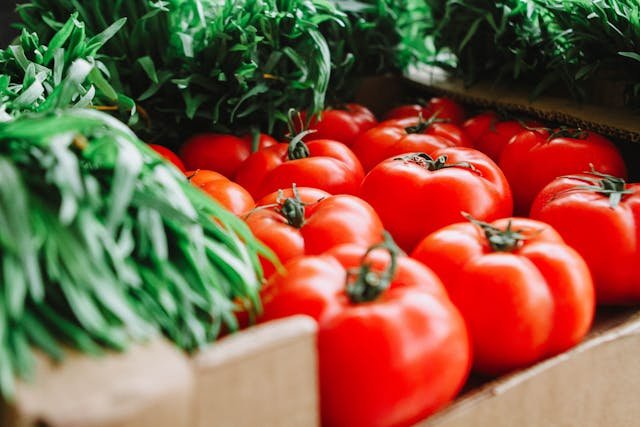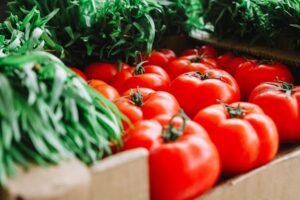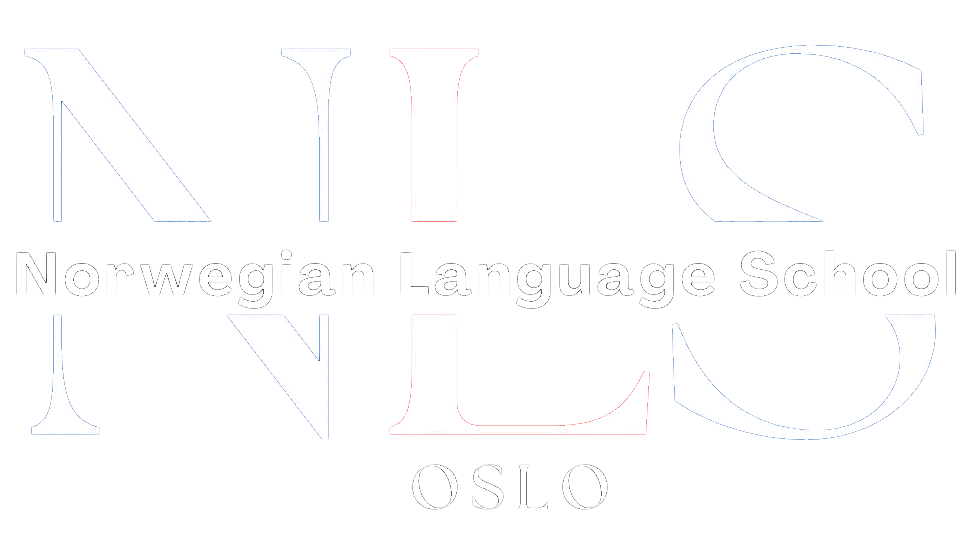Learning how to talk about vegetables in Norwegian is essential for anyone interested in cooking, shopping at local markets, or simply expanding their vocabulary. This guide will help you master the essential Norwegian terms and phrases related to vegetables, providing you with the knowledge needed to navigate conversations about food in Norway.
Table of Contents
ToggleBasic Vocabulary
Let’s start with some basic vegetable vocabulary. Here are common vegetables and their Norwegian translations:
- Carrot – gulrot
- Potato – potet
- Tomato – tomat
- Onion – løk
- Garlic – hvitløk
- Lettuce – salat
- Cucumber – agurk
- Bell Pepper – paprika
- Broccoli – brokkoli
- Cauliflower – blomkål
- Spinach – spinat
- Mushroom – sopp
- Peas – erter
- Corn – mais
- Zucchini – squash
- Eggplant – aubergine
- Celery – selleri
- Cabbage – kål
- Beetroot – rødbete
- Asparagus – asparges
- Pumpkin – gresskar
- Leek – purre
- Radish – reddik
- Turnip – nepe
- Parsnip – pastinakk
- Artichoke – artisjokk
- Brussels Sprouts – rosenkål
Describing Vegetables
When talking about vegetables, you might need to describe their color, taste, or texture. Here are some useful adjectives and their Norwegian translations:
- Fresh – fersk
- Ripe – moden
- Unripe – umoden
- Raw – rå
- Cooked – kokt
- Sweet – søt
- Bitter – bitter
- Sour – sur
- Crunchy – sprø
- Soft – myk
- Juicy – saftig
- Dry – tørr
Example Sentences:
- “The carrots are fresh.” – Gulrøttene er ferske.
- “The tomato is ripe.” – Tomaten er moden.
- “The cabbage is bitter.” – Kålen er bitter.
- “I like my cucumbers crunchy.” – Jeg liker agurkene mine sprø.
- “These strawberries are very juicy.” – Disse jordbærene er veldig saftige.
Buying Vegetables
When buying vegetables, it’s helpful to know some common phrases used at markets or grocery stores. Here are some phrases that might come in handy:
- How much does this cost? – Hvor mye koster dette?
- I would like to buy… – Jeg vil gjerne kjøpe…
- Do you have fresh tomatoes? – Har du ferske tomater?
- Can I get a bag of potatoes? – Kan jeg få en pose poteter?
- Are these carrots organic? – Er disse gulrøttene økologiske?
- Can I taste this? – Kan jeg smake på dette?
- Is there a discount for buying in bulk? – Er det rabatt for å kjøpe i bulk?
Example Dialogue:
- Customer: “How much does this broccoli cost?” – Hvor mye koster denne brokkolien?
- Vendor: “It costs twenty kroner.” – Den koster tjue kroner.
- Customer: “I would like to buy two.” – Jeg vil gjerne kjøpe to.
- Vendor: “Here you go. Anything else?” – Vær så god. Noe annet?
- Customer: “No, thank you.” – Nei, takk.
- Vendor: “Would you like a bag?” – Vil du ha en pose?
- Customer: “Yes, please.” – Ja, takk.
Cooking with Vegetables
In the kitchen, knowing how to discuss cooking methods is crucial. Here are some common cooking verbs and their Norwegian translations:
- To chop – å hakke
- To slice – å skjære i skiver
- To dice – å kutte i terninger
- To boil – å koke
- To steam – å dampe
- To fry – å steke
- To roast – å steke i ovn
- To grill – å grille
- To bake – å bake
- To peel – å skrelle
- To mash – å mose
- To stir-fry – å wokke
- To simmer – å småkoke
Example Sentences:
- “Chop the onions and garlic.” – Hakk løken og hvitløken.
- “Boil the potatoes until they are soft.” – Kok potetene til de er myke.
- “Steam the broccoli for five minutes.” – Damp brokkolien i fem minutter.
- “Fry the mushrooms in butter.” – Stek soppen i smør.
- “Peel the carrots before cooking.” – Skrell gulrøttene før du koker dem.
- “Mash the potatoes with some milk and butter.” – Mos potetene med litt melk og smør.
Common Norwegian Dishes with Vegetables
Understanding how vegetables are used in Norwegian cuisine can also help you learn the language. Here are some common dishes and their ingredients:
- Kålstuing (Creamed Cabbage): A dish made with cabbage, flour, butter, and milk.
- Grønnsaksuppe (Vegetable Soup): A soup made with a variety of vegetables such as carrots, potatoes, leeks, and celery.
- Ertestuing (Stewed Peas): A traditional side dish made from dried peas, butter, and salt.
- Rotmos (Mashed Root Vegetables): Typically made from potatoes, carrots, and rutabaga.
- Rødkål (Red Cabbage): Red cabbage cooked with apples, vinegar, and sugar.
- Surkål (Sauerkraut): Fermented cabbage often served with meat dishes.
- Gulrotsalat (Carrot Salad): Shredded carrots mixed with sugar, lemon juice, and sometimes raisins.
Example Sentences:
- “I am making vegetable soup today.” – Jeg lager grønnsaksuppe i dag.
- “Do you want some creamed cabbage?” – Vil du ha litt kålstuing?
- “Mashed root vegetables are a common side dish in Norway.” – Rotmos er en vanlig siderett i Norge.
- “Red cabbage is often served with Christmas dinner.” – Rødkål serveres ofte med julemiddag.
Talking About Vegetables in a Restaurant
When dining out, you might want to ask about vegetable dishes or make specific requests. Here are some useful phrases:
- Do you have any vegetarian options? – Har dere noen vegetarretter?
- I am allergic to… – Jeg er allergisk mot…
- Can I have the salad without onions? – Kan jeg få salaten uten løk?
- What vegetables are in this dish? – Hvilke grønnsaker er i denne retten?
- Is this dish vegan? – Er denne retten vegansk?
- Can I have an extra serving of vegetables? – Kan jeg få en ekstra porsjon grønnsaker?
- Is there a vegetable soup available today? – Har dere grønnsaksuppe i dag?
Example Dialogue:
- Customer: “Do you have any vegetarian options?” – Har dere noen vegetarretter?
- Waiter: “Yes, we have a vegetable stir-fry and a mixed salad.” – Ja, vi har en grønnsakswok og en blandet salat.
- Customer: “What vegetables are in the stir-fry?” – Hvilke grønnsaker er i woken?
- Waiter: “It contains bell peppers, broccoli, carrots, and zucchini.” – Den inneholder paprika, brokkoli, gulrøtter og squash.
- Customer: “That sounds great. I’ll have the stir-fry.” – Det høres bra ut. Jeg tar woken.
- Waiter: “Would you like any sides with that?” – Vil du ha noen sideretter til det?
- Customer: “Can I get an extra serving of steamed broccoli?” – Kan jeg få en ekstra porsjon dampet brokkoli?
Growing Vegetables
If you’re interested in gardening, knowing how to talk about growing vegetables can be helpful. Here are some related terms:
- Garden – hage
- Vegetable garden – grønnsakshage
- Seed – frø
- Plant – plante
- Soil – jord
- Watering can – vannkanne
- Fertilizer – gjødsel
- Harvest – høste
- Greenhouse – drivhus
- Compost – kompost
Example Sentences:
- “I have a vegetable garden in my backyard.” – Jeg har en grønnsakshage i bakgården min.
- “I planted tomato seeds last spring.” – Jeg plantet tomatfrø i fjor vår.
- “Remember to water the plants every day.” – Husk å vanne plantene hver dag.
- “It’s time to harvest the carrots.” – Det er på tide å høste gulrøttene.
- “The greenhouse helps the plants grow faster.” – Drivhuset hjelper plantene å vokse raskere.
- “We use compost to fertilize our vegetable garden.” – Vi bruker kompost til å gjødsle grønnsakshagen vår.
Conclusion
By learning how to talk about vegetables in Norwegian, you’ll not only expand your vocabulary but also gain a deeper understanding of Norwegian culture and cuisine. Whether you’re shopping at a local market, cooking at home, dining out, or even growing your own vegetables, these terms and phrases will help you navigate conversations about vegetables with confidence. Enjoy exploring the diverse world of Norwegian vegetables and the rich culinary traditions that come with them!









